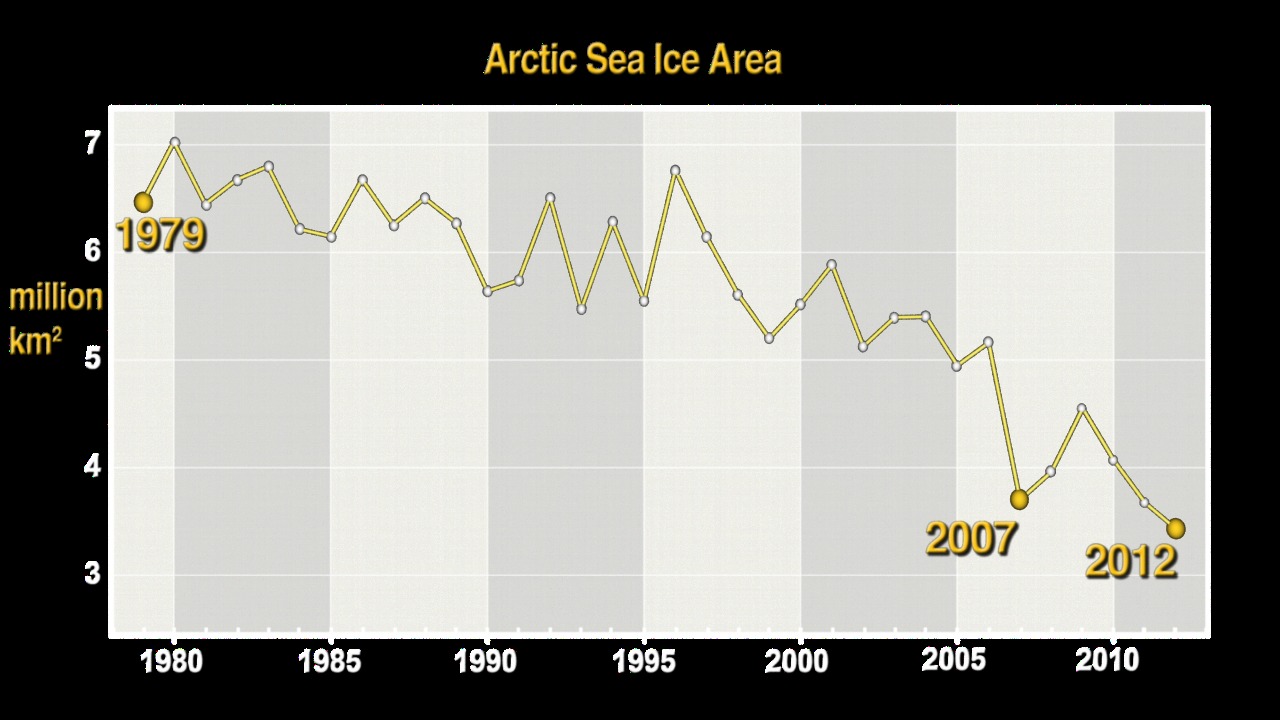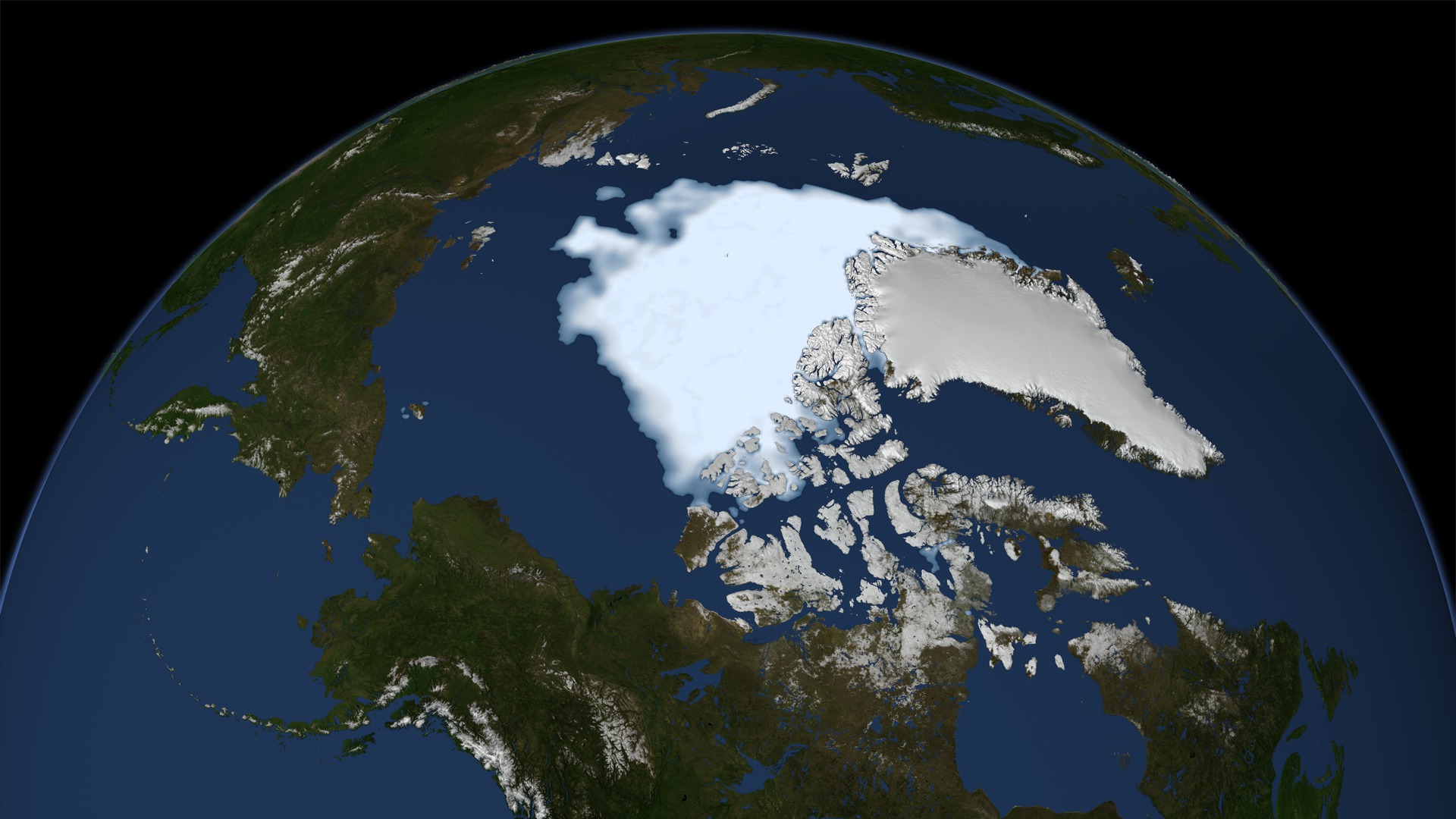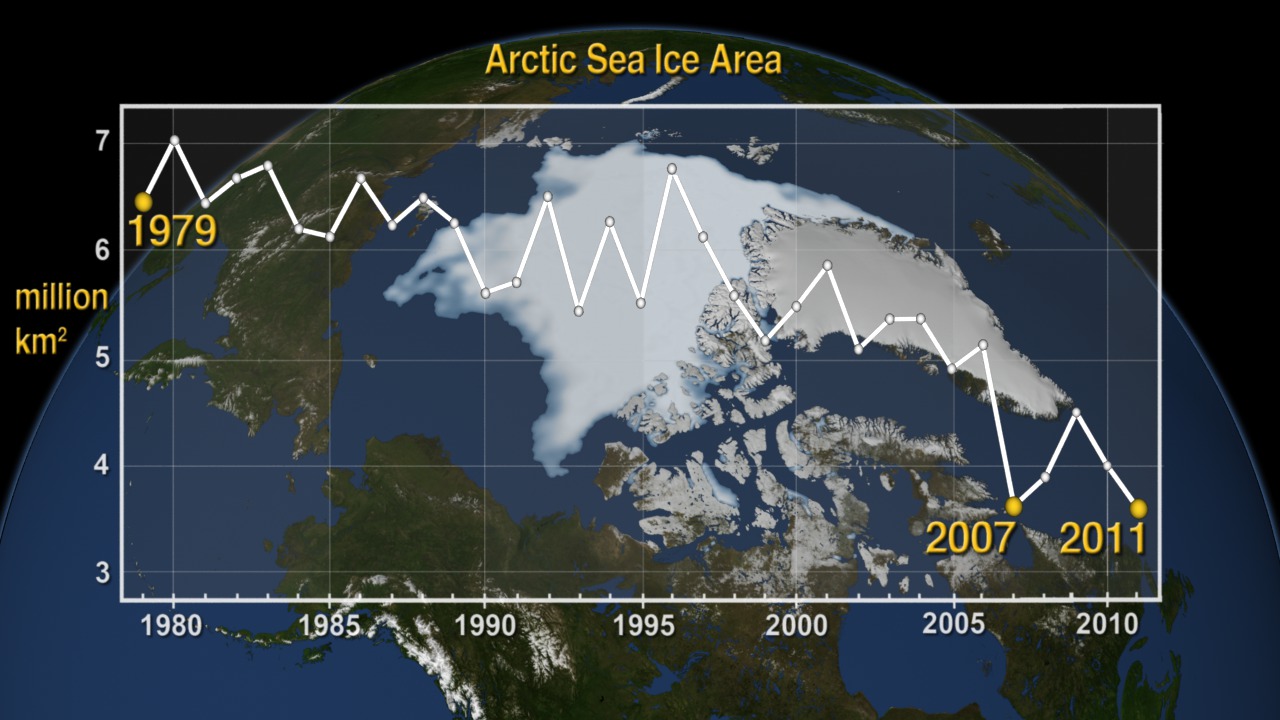Vanishing
On September 16, 2012, sea ice in the Arctic reached a new record low, covering less area than at any point in the three decades of satellite records. Arctic sea ice melts each spring and summer, reaching its minimum size in mid-September. During the fall and winter months the ice returns, beginning a new freeze-thaw cycle. However, as ocean and surface temperatures in the Arctic have increased in recent decades, analysis by NASA scientists has shown the area of the annual sea ice minimum is declining even faster than climate models predicted. What's worse is that this trend has shown no sign of letting up. The visualization shows satellite measurements of the Arctic sea ice minimum each year from 1979 to 2012, a period in which the area of the minimum shrunk by half.

Arctic sea ice continued its long-running disappearing act in the summer of 2012.
Arctic sea ice gradually declined in the 1980s and 1990s followed by accelerated ice loss since 2000.

By the late 1980s, the minimum area had begun to tick down, but registered barely below the initial 1979 measurement.

In 1999 scientists observed an increase in summer sea ice melt and a new record minimum.

Sea ice in 2007 made a drastic single-year plunge, as the minimum area dropped 40 percent below the 1979-2000 average.

Despite year-to-year variation, the area of the annual Arctic sea ice minimum is declining and the decline is accelerating.
For More Information
See NASA.gov
Credits
Please give credit for this item to:
NASA's Goddard Space Flight Center
-
Animators
- Cindy Starr (Global Science and Technology, Inc.)
- Greg Shirah (NASA/GSFC)
- Lori Perkins (NASA/GSFC)
-
Producers
- Jefferson Beck (USRA)
- Patrick Lynch (Wyle Information Systems)
-
Scientists
- Josefino Comiso (NASA/GSFC)
- Robert Gersten (RSIS)
-
Writer
- Patrick Lynch (Wyle Information Systems)
Release date
This page was originally published on Tuesday, September 25, 2012.
This page was last updated on Wednesday, May 3, 2023 at 1:52 PM EDT.


